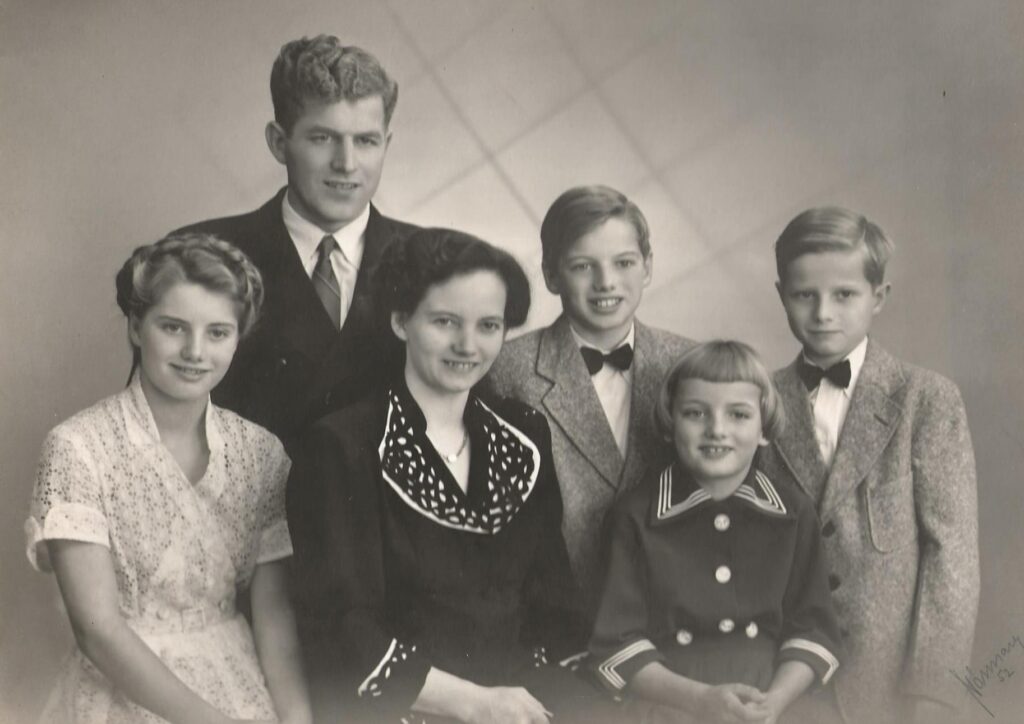
Here is my story about my maternal grandparents’ wild life. It is at the same time a story about Denmark in the time before, during and after the Second World War, which we Danish call “The Occupation”.
Sex before the marriage
Sex before the marriage or with others while married? That is certainly not allowed?
Actually, the ground-breaking research of Denmark’s first sexologist, the doctor Kirsten Auken, shows that no less than 98 of 100 brides in the 30’s started the nuptial bless before getting married.
About half of the women did not pass the nine-month-test either. They had their first baby before nine months had passed after the wedding.
Esther is pregnant
1915, Esther from the island Funen, bold, happy and 15 years old is pregnant.
Johan is the father. Scandal!
Her parents, Edward and Anna send her along to Jutland to have the baby in concealment and adopt it away. Esther does not agree. She comes back to Odense with her little Ella in her arms.
Johan is a bad boy, so she is not allowed to marry him. But when Esther gets pregnant with him once again, they get married anyway.
Johan is an occasional drunk and a bit of a violent man. One day he leaves for America, and Esther sits back alone, now with three daughters.
Money is very scarce. Ella who 50 years later will become my grandmother is bright and artistically gifted, but there is no money for the tailor apprenticeship that she longs for.
After her confirmation she must go into service.

Prime Minister Stauning
1932 Thorvald Stauning is Social Democratic Prime Minister. He has now ruled with the Social Liberal Party for three and a half years.
Times are difficult, Denmark is hit hard by the American stock exchange crash in 1929 and the unemployment rate just keeps rocketing.
Ella on Hverringe Manor
Ella who has become a witty, cheerful and exceptionally beautiful young woman finds herself in high society.
She is in service at the Hverringe Manor close to Kerteminde. Unfortunately, she is a very bad housekeeper, but what can you do?
After she has daily ironed 25 dinner shirts, she rarely irons since. In return, she has very little respect for the noble lordship’s guests and does her best to annoy them.
When her ladyship’s lazy brother asks for a veeery soft-boiled egg she accidentally orders a veeery hard-boiled egg to the kitchen. And strangely enough he often gets to sit at table on a chair with a broken back…
To be Danish is to be a democrat
1933. A fateful year. In Germany Adolf Hitler’s Nazi party takes over and quickly dissolves all democratic rules. From the Soviet-Union horrible stories are told about the communist dictatorship.
What do they do in Social Democratic Denmark?
Hartvig Frisch, the Social Democratic chief ideologist writes the book „Plague over Europe“. He argues that being Danish must always be related to being a democrat.
After some skepticism, especially among young Conservatives who enjoy raising their right hands, all old Danish parties take this position.
It also helps that they can distance themselves from the hated local Communists in this way.
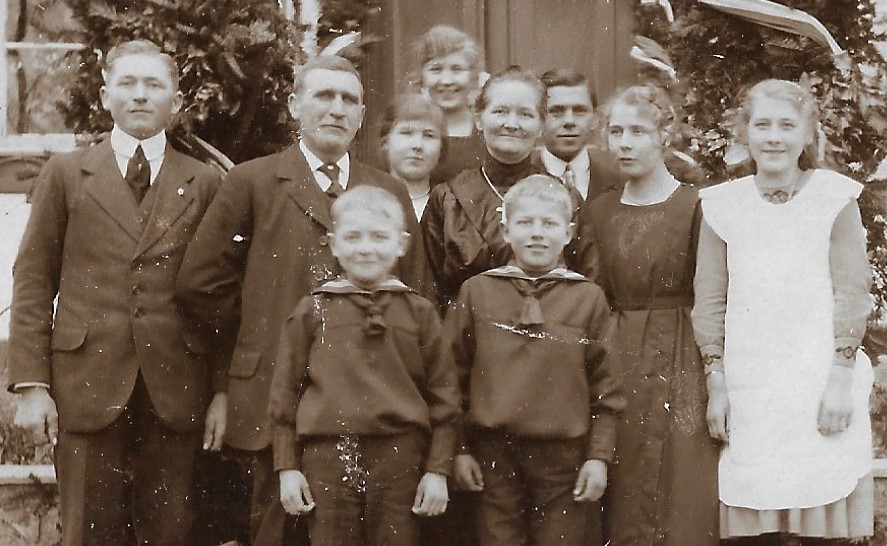
Fearless Rohde
In the village Aasum outside Odense, Rohde grows up in an inner-mission master mason family.
The 8 siblings are governed with a firm and Christian hand by Mother Karoline.
Rohde is a fearless boy, he impresses all the girls (and boys) of the village by climbing up to the roof of the church, jump on one leg along the roof ridge and end up by standing upside down in the stork’s nest.
Rohde grows up and becomes an adventurous and very temperamental young man. He is trained as a machinist and goes to Copenhagen hoping to get out sailing.
After a year of incidental work and a lot of unemployment, he finally gets a job with the fleet of the shipping firm A.P. Møller and sails the 7 seas.
1935 he joyfully writes home from Danzig about his experiences and looks forward to going to a Hitler rally in the evening.
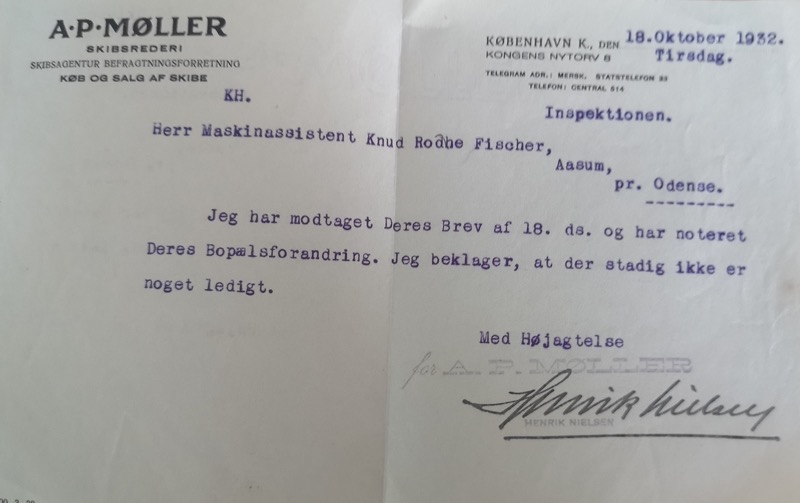
Illegitimate children
Children in the 30’s are not only a blessing but frequently a big problem.
Many a young girl finds herself in life’s greatest dilemma.
The government prepares a new legislation about the legal position of illegitimate children. That encounters criticism:
Danish Female Society’s grand lady, Gyrithe Lemche – herself a mother of nine children – raises fierce resistance against giving illegitimate children the same right to the father’s name and inheritance as the legitimate children.
This would be a „sneaky attack on the wife’s legal rights“ she writes – just imagine if a married woman and her children should share the family inheritance with the husband’s bastard children!
Ball in the boxing club
There is ball in Kerteminde Boxing Club. Bulldozer meets volcano.
Ella and Rohde bump into each other and sparks ignite. They get engaged.
Karoline in Aasum is enraged and insulted that she must receive bastard Ella in her nice home.
But every time she sends her back where she belongs, Rohde’s father, Jacob the master mason, who likes Ella very much, fetches her back.
Rohde writes cheerfully from the boat, that a sailor, as well known, has a girl in every harbour.
Ella most friendly replies, that she, luckily, must only go into town for the same purpose.
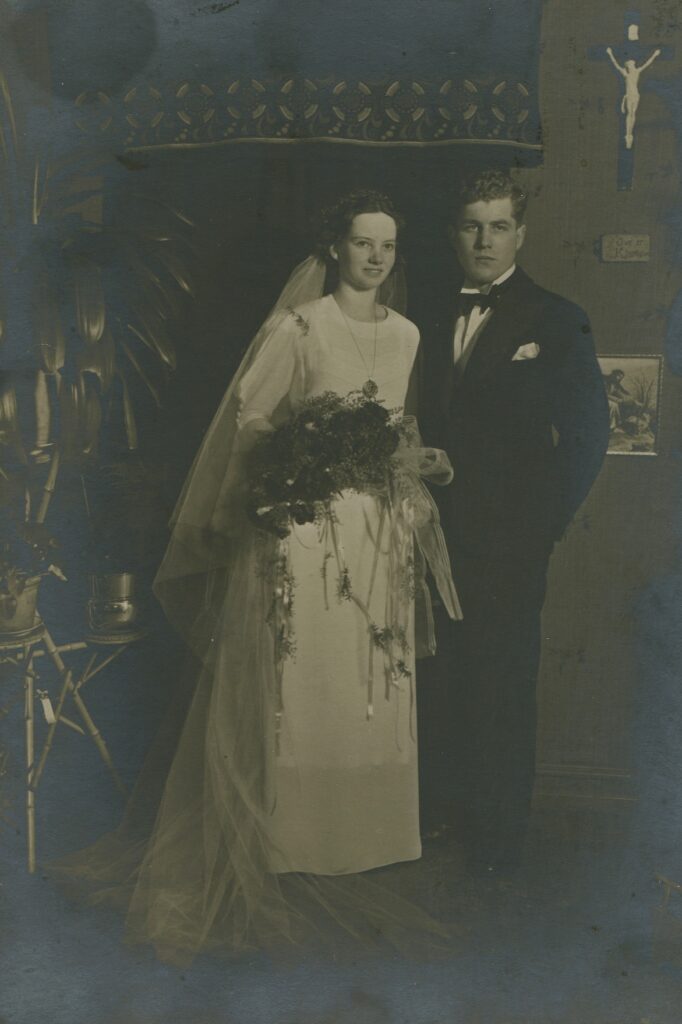
The Kanslergade settlement
The Kanslergade (Chancellor Street) settlement is the greatest Danish political legislation in the 1930’s, named after the negotiations in Stauning’s apartment in the very same Kanslergade.
The Danish crown is devaluated. Public works, exports of agricultural goods, housing construction and a social law are set in motion.
Public help is no longer humiliating alms, but a social right which you can get without losing your right to vote – like people on poverty relief. The wheels slowly start to move again in Denmark.
Happiness in Finland
Rohde, however, can still not find work in Denmark, so he travels to Kotka in Finland, where the firm Saabye and Lerche has employed him to construct a giant harbour elaboration machine.
He makes an oatmeal-deal with the local cook who once a week cook a giant portion oatmeal for him. Practical!
After a while, Rohde is fed up with oatmeal. He asks Ella, whether she would like to come up to Finland. Ella is very happy to get away, and then they marry in 1936.
In the first months in Finland, they live in a cabin in the digging machine. November 1937, Ella gives birth to their first daughter.
They want to name her Anja, but because of the Finns’ aversion to anything Russian, my mother is instead named Anneli.
It is a happy time. Ella is treated like a queen by all the male colleagues. Rohde gets himself a motorboat and they sail everywhere around the Finland archipelago.
Rohde plays with Anneli, sailing her around in a herring box.
One day he falls asleep on the beach and does not wake up, until the herring box with Anneli has drifted far away to sea.
Luckily, he is an able swimmer, but she is far out, and she drifts further away.
At last he finally reaches her and against wind and undercurrents, they arrive safely back to the beach.

The Occupation
9 April 1940.
Motor noise in the early morning. Pamphlets falls from the sky.
Denmark has been occupied by the superior German forces.
Actually, the Germans are not especially interested in Denmark, they want Norway’s attractive North Sea coast, and Denmark is a bit in the way, so the country must be occupied too.
The Danish government receives an ultimatum, either unconditional surrender or the army will be brutally defeated.
Protesting, Prime Minister Stauning decides to capitulate. The Danish government and the King stay in Copenhagen.
With the captain as midwife
There is also unrest in wonderful Finland.
The Soviet-Union is arming and expanding and demands Finnish territory.
It is decided that all Danish posted workers in Finland must be sent back home.
Ella is highly pregnant, and the Finnish captain tells the little lady, that she must squeeze well together. Otherwise the ship’s law is that the captain must function as midwife.
As a Greek boat next to theirs is torpedoed, Ella gets a shock, the water breaks, and the captain must find his instruction book in births at sea.
The birth goes well. The captain is so exhilarated about his achievement that Ella herself must pull out the aftermath. But she knows well from the last time how it is done, and 3 September 1939 my uncle Knud Rohde arrives to a very disturbed world.
It is the first sinking of a ship during the second World War.
While giving birth, Ella has enough presence of mind to send Rohde up to the deck and take pictures of the sinking ship. When they arrive in Copenhagen, Rohde sells the pictures to the newspaper Politiken for 200 Danish crowns.
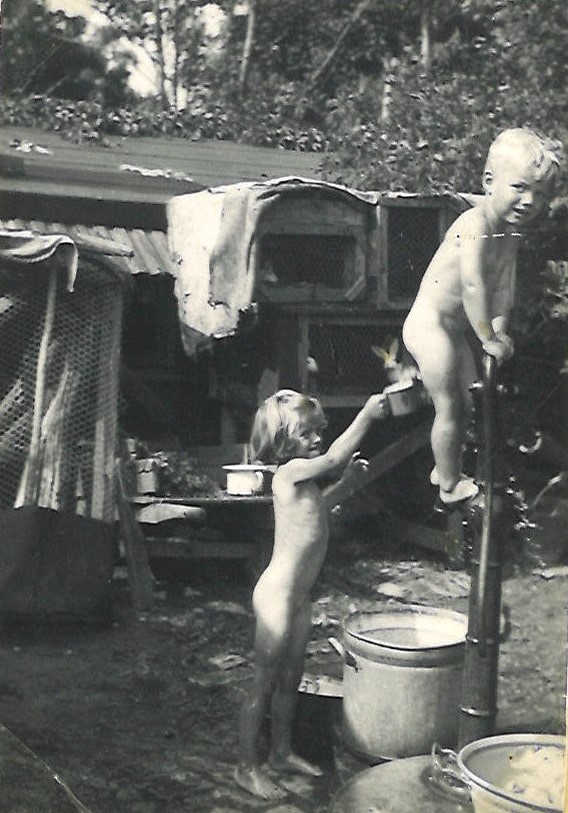
Foreign Secretary Scavenius praises Greater Germany
Things are actually going pretty well in Denmark during the occupation.
The occupying power leaves people at peace as long as they don’t speak their mind. And why ever would you want to do that anyway?
Better to keep a good relationship with Germany and Hitler. At the formation of a new coalition government of all parties on 8 July 1940, foreign secretary Scavenius proclaims:
“With the great German victories, which have struck the world with astonishment and admiration, a new time has begun in Europe, that will cause a new political and financial order under German rulership.
It will be Denmark’s assignment here to find its place in a necessary and mutually active collaboration with Greater Germany…”
More than collaboration politics this is rather concession politics.
Germany will win the war, and you can just as well get the best out of the situation.

Three children in three and a half years
Ella and Rohde find themselves in Copenhagen.
The doctor has warned Ella that her constitution does not allow her to have so many children, but already in 1941, the third baby in three and a half years arrives. My uncle Jørgen.
Rohde is working in neutral Sweden for Saabye and Lerche, digging out the Falsterbo Channel.
When he on a rare occasion comes back, he brings coffee, chocolate and soap along!
The neighbours want to share the good gifts, but Rohde tells them that the Swedish soap is made of boiled German soldiers‘ cadavers, and then they lose the interest in cleanliness.
Having finished the work in Sweden, Rohde comes back home, and they move in with Mother Esther and her new husband Julius in Seden close to Odense.
Incidentally, Johan, the old one, has returned from America. He has become a full time alcoholic and later ends his days falling drunk off a tin roof in Copenhagen.
Rohde’s father has also died, and Rohde’s big brother Emanuel or Manse is called home from Argentina where has ridden as a gaucho on the Pampas.
He must now take over the mason business.
He moves in with Mother Karoline. When she is asked whether it is not a pity that Manse has no girlfriend, she says, “Well yes. But it is good for me!”
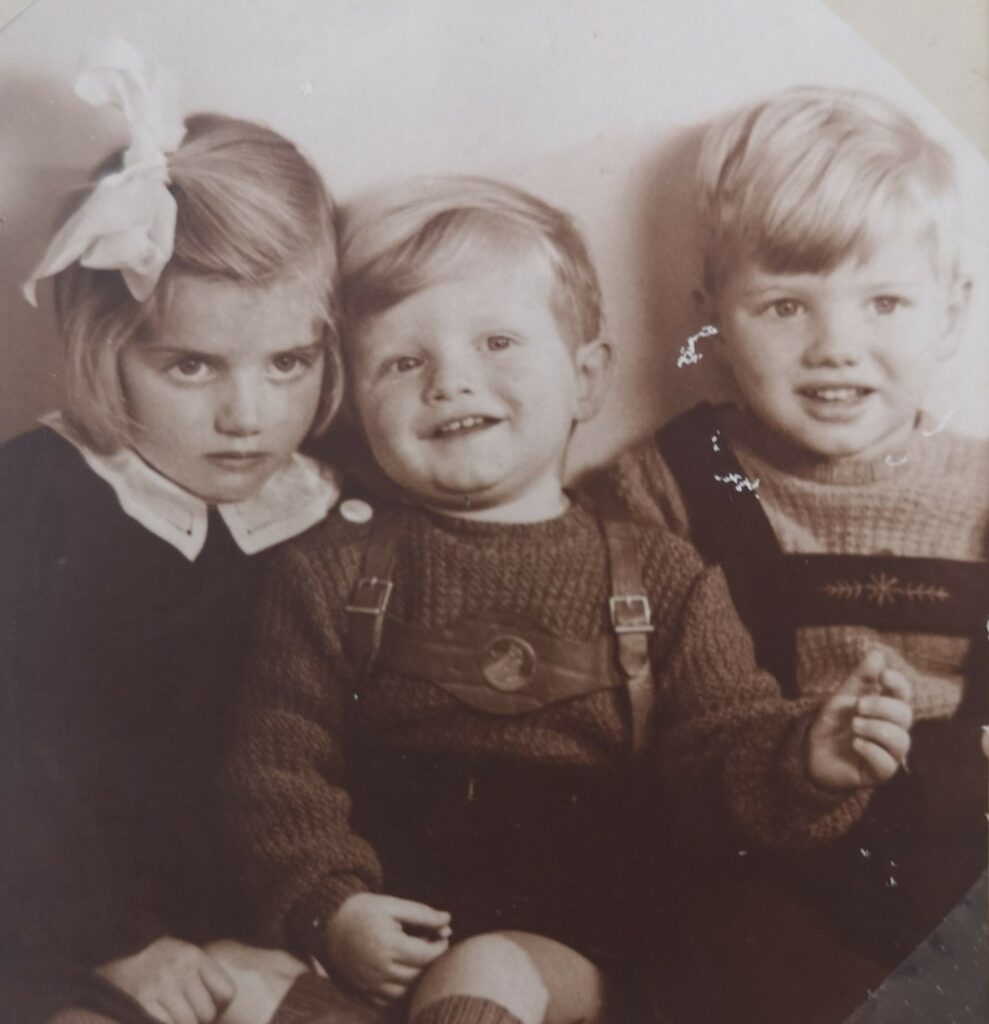
Forbidden to be a Communist
Perhaps it is not so much fun to be occupied?
The government maintains its neutral collaboration politics, but it gets more difficult to be a true democrat and even harder to be a communist.
Dates of 1941
- 22 June: Germany attacks the Soviet Union. The same day raids against members of the Danish Communist Party
- 19 June: The Free Corps Denmark is initiated. It is a military unit of Danish volunteers, who will participate at the Eastern front on the German side
- 22 August: The Danish Parliament against the constitution decides to ban communist activity. 300 communists are interned.
Workshop on Aasumvej
Rohde is sort of Conservative.
He gets occasional work at the Albani-Breweries in Odense, but there is not much to do.
So he opens a workshop on Aasumvej, between Aasum and Odense. In the workshop he repairs all kinds of machines, from sewing machines to combine harvesters.
At the end of 1942, he and uncle Manse very actively join the resistance movement.
The rescue action of the Danish Jews
From 1942, German Attorney General in Denmark is Dr Werner Best.
Dr Best believes to understand the most well-behaved Danish protectorate better that Berlin and rules somewhat milder than the German headquarters demand. The Danish government keep governing in collaboration with Dr Best.
Nonetheless, actions of sabotage increase.
Dr Best is called home for reprimands in Berlin, and 29 August 1943 he demands that the government declares a state of war with among other things death penalty for sabotage.
The government can no longer participate. It and the parliament cease in their respective function. They so to speak quit their jobs.
In the night between 1 and 2 October 1943 an action of arrest and interning of all Danish Jews is planned.
However, German officials leak the action to Danish Social Democrats, and through a large-scale civil rescue action most Jews are sailed over the small sound Øresund to neutral Sweden.
More than 7000 Jews are saved, close to 500 are apprehended and sent to German camps where “only” 52 perish.

Rohde and Manse in rescue actions
Rohde and Manse help families from the Vejle/Kolding area in Jutland and from Odense on the run.
They are sometimes hidden with Ella and the three small children and sometimes with Grandma Karoline and Manse in Aasum.
As they during the flight arrive at the Storebælt belt, Manse who is still a bachelor, tells Rohde to go home to his wife and children.
The last and most dangerous trip to Copenhagen and North Zeeland he will manage on his own.
The Danish Freedom Council
The politicians have resigned, and a government of civil servants is installed. However, from political side there is still doubts about the resistance movement.
Aren’t they just wild Communists who hide weapons for the world revolution?
Actually, there not that many weapons, and there are even fewer Communists.
Conservative forces in the resistance movement participate in the creation of an underground government, The Danish Freedom Council.
SS on a visit
Ella and Rohde get a visit from the German intelligence service SS. They want to use their house as a command center.
Rohde avoids being obliged to house all the civilians but some of the officers stay.
Three year old Jørgen is very excited to see some real soldiers so he gets his toy gun which the soldiers find very amusing. Fornately, Rohde’s gun is not found.
Ella thinks she’d better be hospitable to the visitors, having Rohde in the resistance movement, and the neighbours begin suspecting them to be German-minded. To make matters worse, their family name is the German Fischer…
In the middle of the cold winter of 1944, Ella gives birth to their fourth and last child, my aunt Kis.
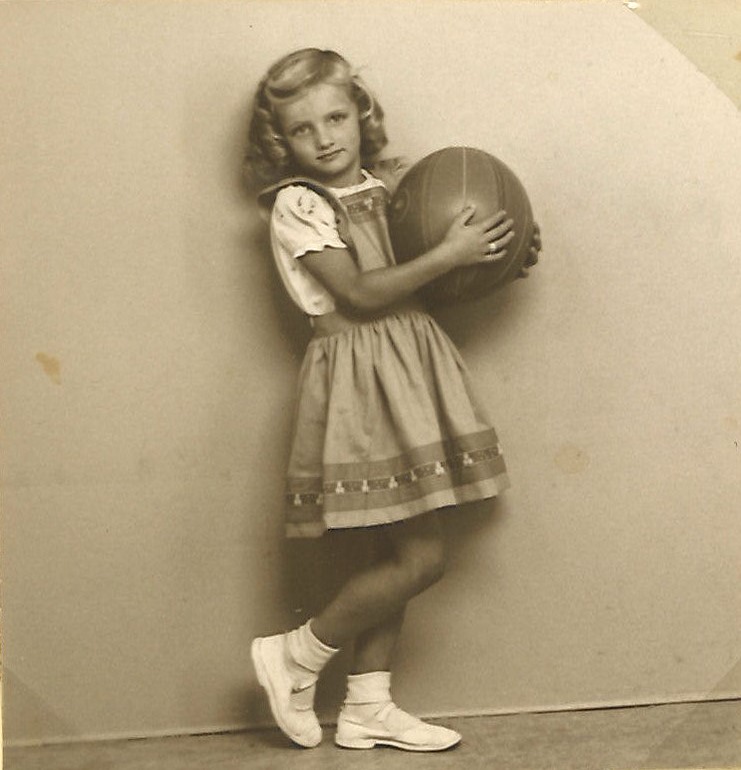
The Liberation
1945, the Danish society is in total disorder.
The police force is dissolved, and many policemen are interned in German concentration camps.
For police matters a socalled Hilfs-Polizei – HiPo corps – is formed. It consists of Danish Nazi sympathisers, among them people with a past in the Free Corps Denmark.
Liquidations of informers are punished with executions of members of the resistance movement.
Stauning is dead. All is chaos.
Longingly, the Danish people listen to news from the free world on the wireless.
Hey, what is that?
“This is London: In this very moment it is announced, that Montgomery has informed, that the German troops in Holland, Northwest Germany and in Denmark have surrendered.
We repeat: Montgomery has informed, that the German troops in Holland, Northwest Germany and in Denmark have surrendered!”
Denmark is free again!
Nobody knew in advance. Neither the King nor the Freedom Council.
A sea of people mounts in an enormous wave of joy that wash the occupation away!
Coffee in the destroyed city of Hamburg
The neighbours on Aasumvej are considerably more friendly towards Rohde and Ella when Rohde appears wearing the freedom fighter armband. Have a look!
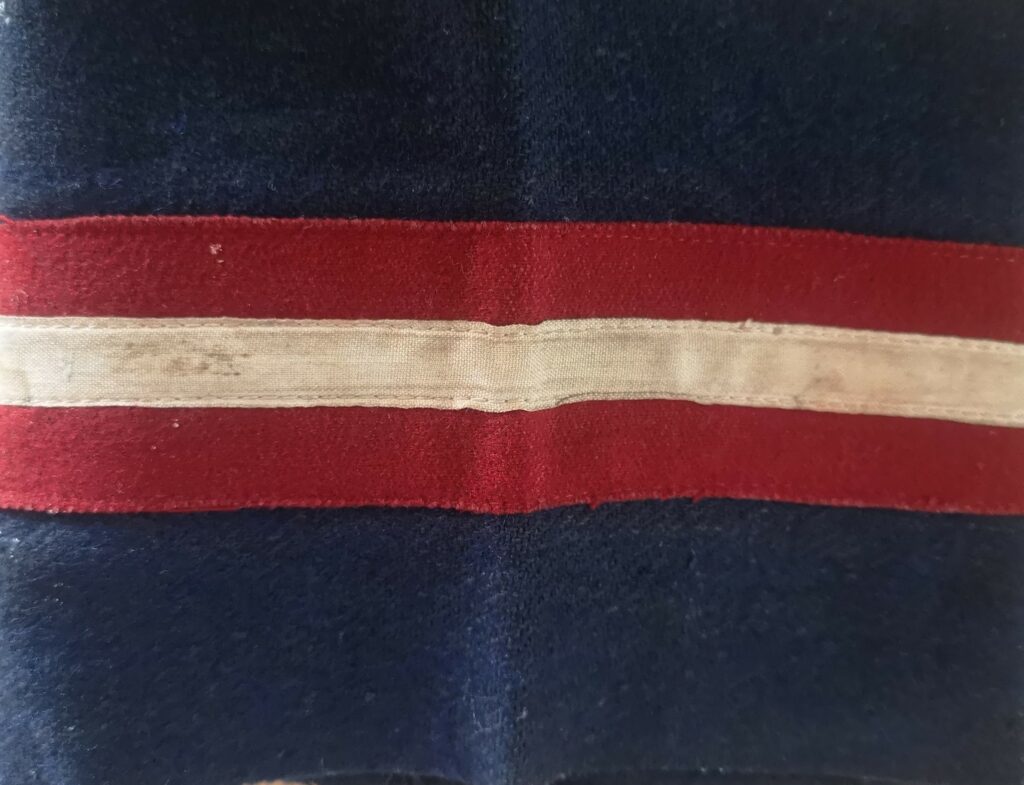
One of the families that Rohde and Manse have helped escape to Sweden, gratefully, lend them their holiday cottage at the seaside.
But as the family during the week repeatedly shows up at the cottage expecting to be hosted, without rationing coupons, not-so-domestic Ella furiously demands to return back home.
At last they want to explore the world again. With a friend they drive in a car to visit the destroyed city of Hamburg.
They have brought coffee from the black marked. You can do without a lot, but not coffee.
They meet the local friends of their fellow traveler, who get tears in their eyes tasting the real coffee.
They ask if they perhaps could keep the grounds, it must be possible to extract an extra sip from them.
Ella gives them the rest of their coffee, actually they can do very well without coffee.
When Rohde pulls off his new knitted jumper and gives it to them, however, it is almost too much for Ella.
That was a long winter’s knitting work of rewound recycled yarn!
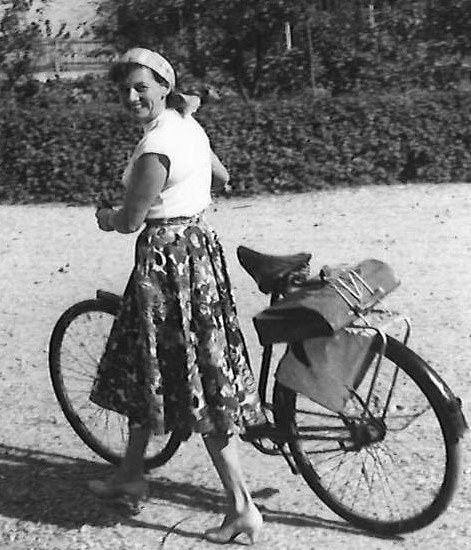
The cold war
The warm war is followed by a cold war.
Denmark prefers to remain neutral and form a great Nordic alliance.
Is there perhaps a real danger of atomic war?
Not this time.
The Nordic collaboration fails. Finland fears the Soviet Union, Sweden wants to remain neutral and Norway with the large North Sea flank wants to be part of NATO.
After many considerations, Denmark decides to follow Norway and joins NATO too.
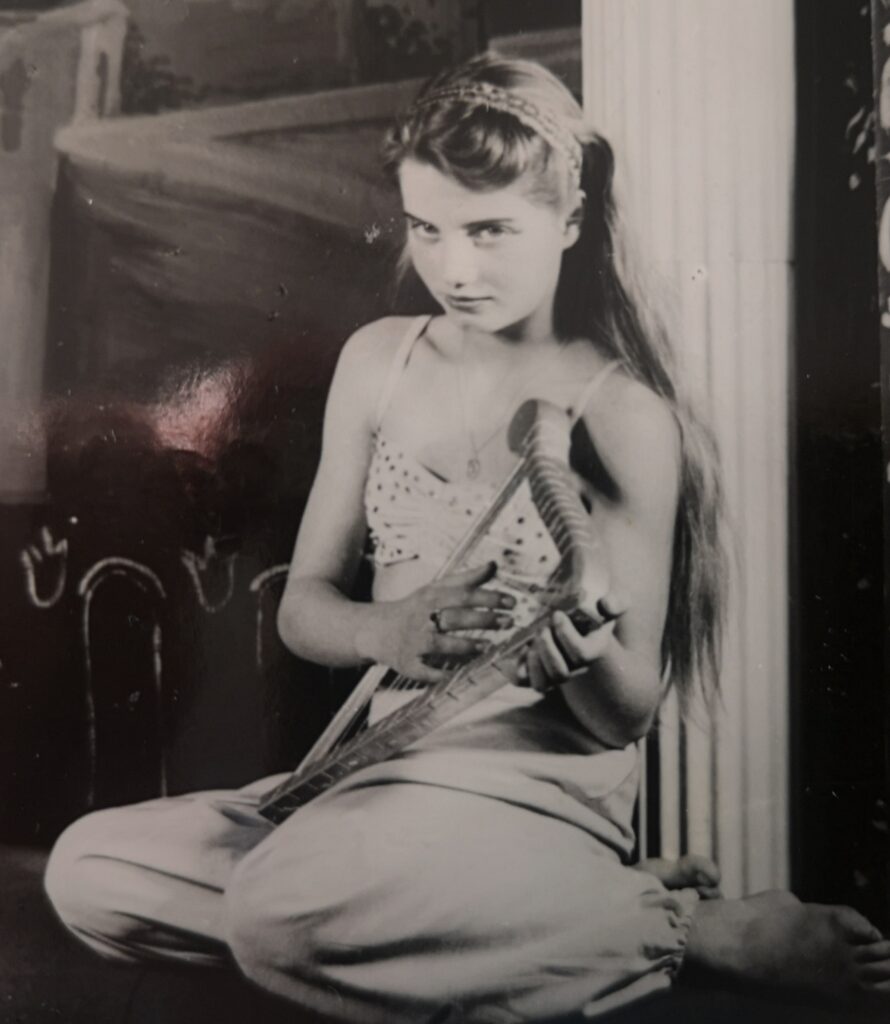
Volcanic and peaceful educations
Rohde and Ella lead their own private atomic war.
They attempt to get used to a peaceful cohabitation. But their real talents lie in drama and conflict.
It is perhaps not a coincidence that they first met each other in Kerteminde Boxing Club?
Rohde is hospitable and welcomes people with open arms, but he does not earn any money and the strong arms also get used at home.
However, Ella has sworn that her children will have the education that she herself was denied.
All four of them succeed.
Anneli graduates with a high school diploma and becomes a teacher, later she studies musicology and Spanish at the University.
Knud Rohde gets a volcanic education as a car mechanic in Rohde’s workshop, he later becomes an engineer.
Jørgen more peacefully is trained as a mason at Manse’s in Aasum, he furthers his studies to become a building constructor.
Kis becomes a surgical nurse.
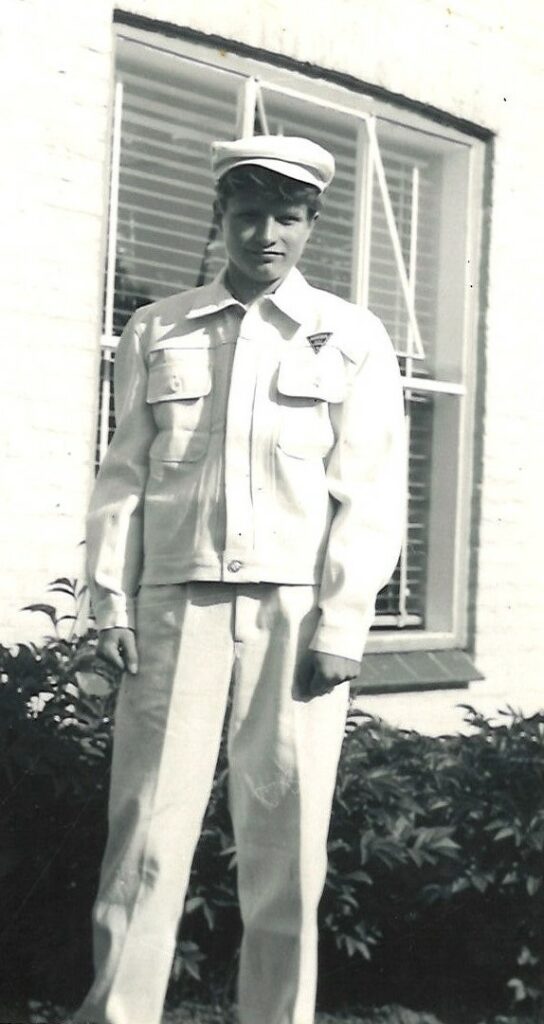
The manly car
Cars are no longer just for businessmen. In the late 1950s car sale explodes in Denmark. Not least because the last post war tolls and rationing rules are abolished.
Car owners salute the cars giving them pet names: The manly car. The wife car. The baby car. And the dog house.
The cars get smaller, faster and more luxurious.
They come with a clock, ventilation and side door pockets for the maps for the car holiday. The most popular cars also have a spacious trunk.
And who wants to use for that lovely space for a spare wheel? Smart people invent a practical spray which quickly can mend a puncture.
The spray can easily fits in the glove compartment.
New scandals in the family
The scandals of family drive on to the next generation.
21 years old, Anneli finds herself pregnant and must quickly marry one-year younger Peter, who as an underage must apply for a royal letter to get permission.
“You can be grateful that your grandmother will not see this!” Rohde says theatrically.
Karoline has died (and Manse has got himself a girlfriend).
They marry on the third day of Christmas, and seven and a months later, the most wonderful little girl, the new apple of Rohde’s eye, comes to the world, my sister Anja.
Ella is not enthused to advance to the granny role, couldn’t they call her “Little-Mum” instead?
Now she wants to get going herself, she takes office training and later becomes a traveler guide with Gislev Travels.
In the whole summer season, she goes by bus with guests to the Harz in Germany and Lillehammer in Norway, returns Saturday night with smuggled goods, fresh salamis!
And off again next morning. Her life takes an exciting new turn.
Rohde’s car workshop leads a hand-to-mouth existence. He has an open heart for people in distress, he will rather repair for free and give away his last shirt than see people suffer.
The Devil’s birthday (the semi-annual day of paying taxes) is a day of terror.
But each time they manage to get through it.
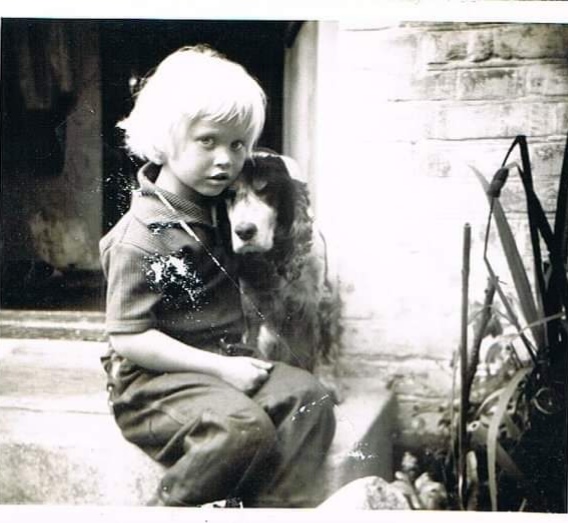
The Welfare State
We have reached the end of our Danish story.
The Welfare State is on its way, implemented by many years of social democratic governments. In the 60s prime minister Jens Otto Krag makes “good times better”.
Denmark develops a comprehensive hospital system. There are nursing homes for the elderly, disabled and sick.
An education system that in principle gives everyone the opportunity to educate themselves as best as their abilities allow.
Nurseries and kindergartens and leisure centers and youth clubs, where children get food and are brought up.
While father, and increasingly also mother, go to work and make the family richer than ever before in Danish history.
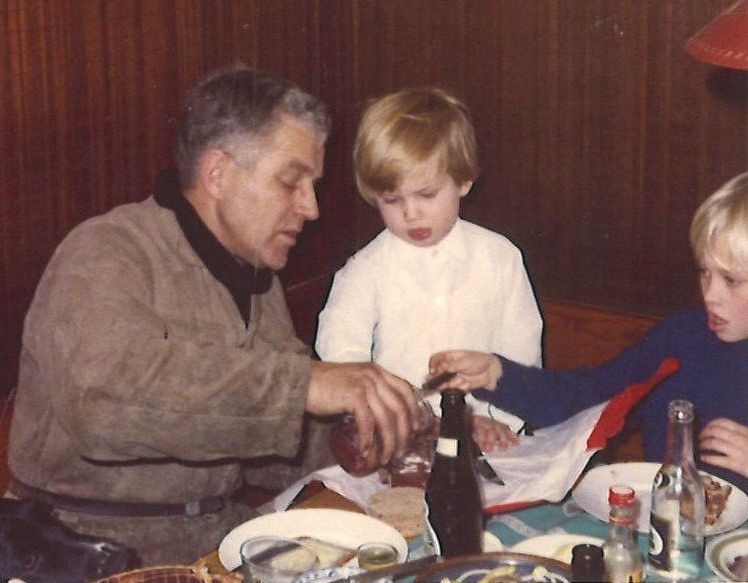
The last years
Ella and Rohde carry on living together on Aasumvej.
On the other side of the street a new residential center, Vollsmose, later infamous for immigrant troubles, emerges.
Rohde, who has smoked 60 North State cigarettes without filter day since was about 10 years old, gets a brain haemorrhage, when he is in his early 60s.
A summer, while Ella is away travelling, Rohde has disappeared. A couple of days later his body is found in Odense river.
Has he fallen, or has he gone into the river intentionally, is an open question.
The autopsy later reveals the appearance of a second brain haemorrhage.
Ella saddens much more than one would expect.
Especially when also Mother Esther and later their dear dog Kiwi die the same year.
She rises again, sells the workshop, moves into a detached house and over the years transforms the pretty normal garden into a jungle.
She watches her children get married, get divorced and remarry, get their own children and grandchildren.
She keeps working as a travel guide until she is 78 years old.
To her annoyance she then is no longer hired anymore. But she carries on traveling, now as a guest, until she is 89 years old.
Then her remarkable strength slowly diminishes.
She says to me: “I knew nothing about bringing up children. I did so much wrong. I wish I had done better. But things are as they are.”
Ella has resolved her conflicts with the world and with herself. She dies peacefully at 92.
I her shed, her children later find 12 hidden bottles of brandy!
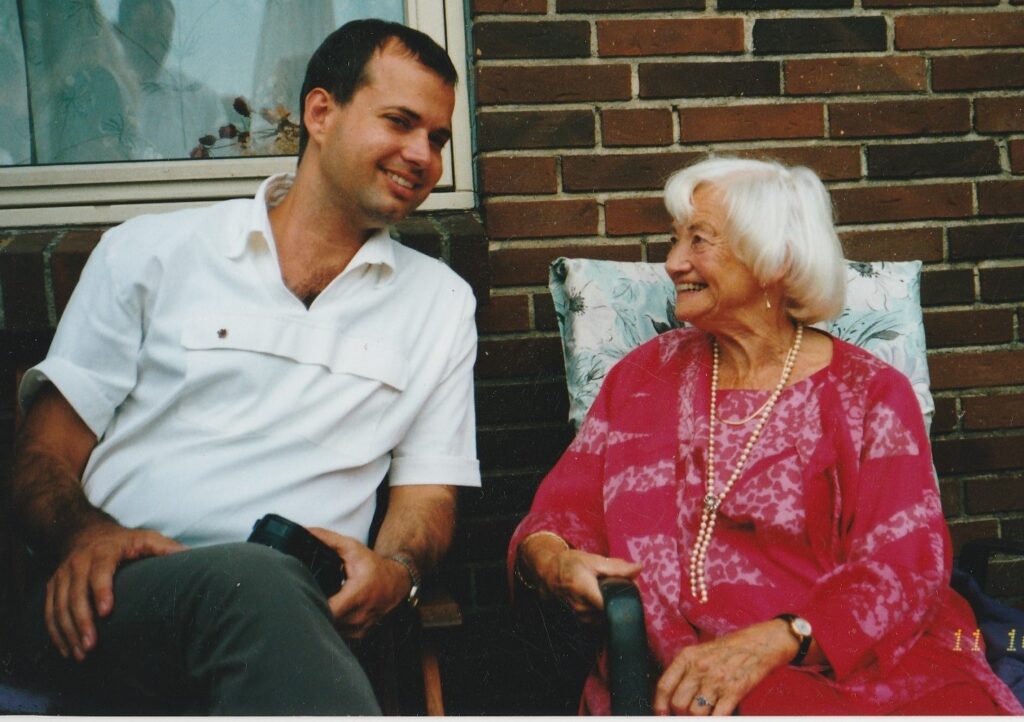
The texts are taken from my cabaret “Glemmer du?” – “If You Forget” and slightly adapted to this form.
I heard many of the stories from my grandmother as a child. My mother Anneli, my mother’s brothers Knud Rohde and Jørgen, her sister Kis and her cousin Marianne have helped with pictures and further stories.
Pia Fris Laneth has very kindly lent me material from her books and read my manuscript.
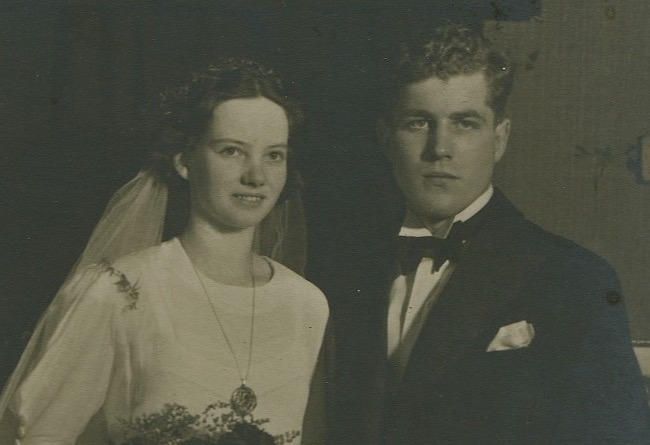
Wow!
first compliments for sharing your family history, what an amazing story.
The photographs are so beautiful and convey the times they were taken in.
I felt like I was reading a book, so incredibly well done.
And my, I love that photo of you with your Grandmother I would have fallen madly in Love with you If I had met you then. Stunning.
Thanks, dear Paul. It has been such a pleasure researching and writing the stories. And I truly did love my Granny!
pleasure, Yes I see that you loved your grandmother, I have to say the same of my paternal grandmother she was a diamond!
wonderful 🙂